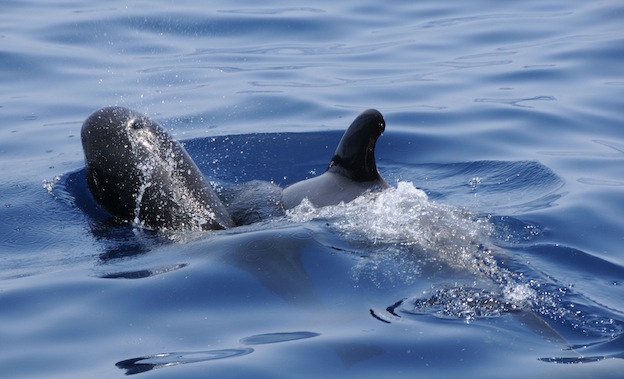
Reproduction
Females are mature for mating around 8 years of age. For the males, it occurs later around 12 to 13 years of age. The males tend to mate with several females, and there are generally about 1 mature male for every 8 mature females. Mating times vary based on the location, and it takes from 12 to 16 months for the young calf to be born. They can be anywhere from 5 to 6 ½ feet long at birth and they can weigh as much as 165 pounds. They may drink the milk from their mother from 18 months to 44 months.
The females will have one offspring every 3 to 6 years. Males typically can live in the wild to the age of 35 to 45 years. For the females, it may be up to 60 years.Studies indicate that the older females go through menopause. Once they can no longer mate themselves, they take on the role of additional caregivers for the young in their pod.
Conservation Status and Threats
Due to the large size of their bodies, it is common for them to get stranded on the beach. One of the efforts in place involves being able to successfully get rescue teams in motion to get the Pilot Whale back in the water before stress and other factors take a toll on their ability to survive. When one gets stranded though others in the pod may follow due to the bonds they have and that can spell disaster.
Sometimes, they get injured or killed due to the efforts of commercial fishing. In some areas it is illegal to use various types of nets and equipment to the risk of Pilot Whales and even to other dolphin species that may reside in the same proximity. Illegal hunting continues to occur even though it is banned in many countries. Enforcing such laws can be very difficult and there are those that will pay lots of money for the thrill of such an exotic hunting expedition. In some areas, the meat from these dolphins are consumed and that has accounted for quite a loss in their numbers over time.
There is the risk of lice and other serious problems for them. They are susceptible to forms of viruses and bacteria that can cause them to develop fatal problems such as upper respiratory tract infections. The risk of pollution in the water increases those chances, so plenty of the conservation efforts in place are focused on keeping the water clean. Problems with contact with boats can be an issue in some locations. Bans on where boats can go has helped to some degree. Noise problems continue to be a big factor as they can increase stress levels which reduce mating. The noise can also offset the use of echolocation and navigational abilities for these dolphins.
In the UK, the Pilot Whale is protected under the Biodiversity Action Plan and under the Wildlife and Countryside Act of 1981. This makes it illegal to intentionally harm them in any way in the UK waters. It is unknown what the population in the wild is for either species of the Pilot Whale. However, they are both believed to be at risk and to be able to benefit from such conservation efforts in place.
(source:google/http://www.dolphins-world.com/)
No comments:
Post a Comment